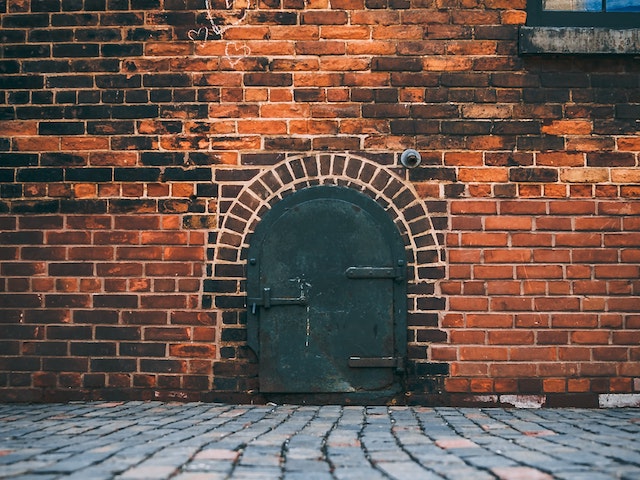Lyndsey Garrett on the inspiration to be found on our doorsteps.
The grout in the kitchen tiles is cracking out. It’s something I’ve only really noticed, now we spend most of our day in or around that part of the flat. In some patches the gaps are like the divergent boundary of tectonic plates, the floor seismically shifting as we pace across. When we first uncovered the kitchen floor it looked like a child’s seaside drawing, the floorboards warped into waves lapping the shore. This place is old, the earliest trace we could find was a map in the 1870s that marked out the building we inhabit and a yard space, probably for horses. It’s now occupied by flats, part of the always-changing London landscape.
The landscape around us can tell many stories, either through its history or through the connections we make with it. We apply magical thinking to places all the time, places that we associate with certain memories. They’re places that trigger specific physical and emotional reactions. The idea of places, locations or buildings causing such reactions is known as psychogeography. But it isn’t just personal memories that can do this, knowing the history of a place can also trigger a physical or emotional response. Ian Sinclair explored this in London Orbital, a chronicle of his walk of the M25. The areas he visits are marked by their history, from old munitions grounds where the soil is now toxic to large residential flats that were once Victorian asylums. Perhaps a different kind of madness or confinement is now in place.
You don’t need to walk the perimeter of the M25 to explore psychogeography. With the country and much of the world in various stages of lockdown, our ability to wander is restricted for now but we can still find a connection with places. If we’re fortunate to be able to take a walk outside, there is much we can absorb during that walk and closer attention we can pay now that the streets have quietened. Is the walk you take the same as you would have done prior to lockdown? What reactions and emotions do you experience on the way? Does something catch your attention that needs further research, a landmark or change in the road layout?
Researching in the current situation is limited to the internet and anything you may have available at home, but a quick google search can often yield odd bits of information. Many archives have a digital collection of some form, and there are other sites maintained by researchers and enthusiasts. Even property listings can produce interesting information. It was from the listing of one of the other flats that we discovered this place was the site of an umbrella factory, those warped floors suddenly making sense. There may be local forums where you can ask questions about the area.
There’s a residents’ association for our street. On the website they’ve curated a history section of photographs from as far back as the Victorians. Though there is nothing about our own place, there are details of shops that used to be next-door and churches that used to be around the corner. Though those churches no longer exist, others still do and we occasionally hear the bells on a Sunday. Perhaps the workers used to attend service around here. It’s from such research that stories can begin to feed outwards.
Emotional or physical responses could also be triggered by a photograph of a location, stirring memories of our own time there or empathising with the captured image. In knowing something about a place, do we project our own feelings on to it? There’s always a feel of something happening here, a mirroring of activity; the way the boards creak, the wood worn by footsteps across the years, the vibrations carrying through the walls from the neighbours, vibrating the walls as machinery would have done in the cutting and sewing of cloth, my husband lifting a saucepan from the hob, me typing at the desk as others would have lifted tools and written out the day’s production numbers. Out the back, now frozen by layers of paint, a hoist that would have swung out into the yard, bundles of raw materials winched up from the carts. The constant noise of people, machines and horses. Dust from the offcuts; there wouldn’t have been the pollution marks that line every door and carpet edge today. Though in lockdown those lines are fading, becoming a shadow of a memory.
There are many stories soaked into the landscape around us. Stories that we can tease out or expand on to create new narratives. And with each passing day, every new experience adds another layer to the stories waiting to be told.
Lyndsey Garrett lives in London. She took a bit of a wrong turn after school and ended up as an accountant for the next several years. As a current Creative Writing BA student at Birkbeck University she’s now working hard to remedy that! Lyndsey was a Notable Contender in the 2017 Bristol Prize. She is a member of the Secret Garden Writing Club and manages the MIROnline Blog.

